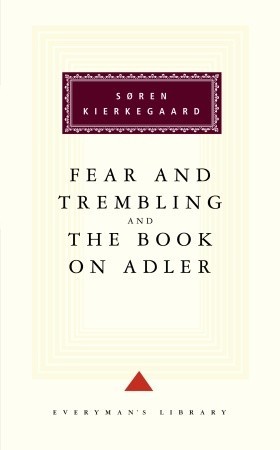- Biblia
- Leer la Biblia
- Versiones de la Biblia
- Verso del dia
- Planes de lectura
- Versos por tema
- Books of the Bible
- Imágenes De La Biblia
- Estudio
- Comentarios
- Concordancias
- Diccionarios bíblicos
- Enciclopedias bíblicas
- Sermones
- Bible Atlas & Maps
- BP Wiki
- Devocionales
- Devocionales de hoy
- Light of the World
- Todos los devocionales
- Inspirational Quotes
- Más
- Picture Quotes
- Videos
- Inspirador
- Estudio Bíblico
- Lo que dice la Biblia
- Bible Q&As
- Daily Bread
- Bible by Genre
- Bible Stories
- Random Bible Verse
- Comunidad
- Store
Fear and Trembling/The Book on Adler
by Soren Kierkegaard
Now recognized as one of the nineteenth century's leading psychologists and philosophers, Kierkegaard was among other things the harbinger of exisentialisim. In Fear and TremblingFear and Trembling he explores the psychology of religion, addressing the question 'What is Faith?' in terms of the emotional and psychological relationship between the individual and God. But this difficult question is addressed in the most vivid terms, as Kierkegaard explores different ways of interpreting the ancient story of Abraham and Isaac to make his point.
Søren Kierkegaard not only transformed Protestant theology but also anticipated twentieth-century existentialism and provided it with many of its motifs. Fear and TremblingFear and Trembling and The Book on AdlerThe Book on Adler–addressed to a general audience–have the imaginative excitement and intense personal appeal of the greatest literature. Only Plato and Nietzsche have matched Kierkegaard’s ability to give ideas so compellingly vivid and dramatic a shape.
Translated by Walter Lowrie
Søren Kierkegaard not only transformed Protestant theology but also anticipated twentieth-century existentialism and provided it with many of its motifs. Fear and TremblingFear and Trembling and The Book on AdlerThe Book on Adler–addressed to a general audience–have the imaginative excitement and intense personal appeal of the greatest literature. Only Plato and Nietzsche have matched Kierkegaard’s ability to give ideas so compellingly vivid and dramatic a shape.
Translated by Walter Lowrie
Hardcover, 352 pages
Published May 10th 1994 by Everyman's Library (first published October 16th 1843)
Suscribir
© 2025 Bibleportal.com Reservados todos los derechos.

Kierkegaard left the task of discovering the meaning of his works to the reader, because "the task must be made difficult, for only the difficult inspires the noble-hearted". Scholars have interpreted Kierkegaard variously as an existentialist, neo-orthodoxist, postmodernist, humanist, and individualist.
Crossing the boundaries of philosophy, theology, psychology, and literature, he is an influential figure in contemporary thought.... Show more